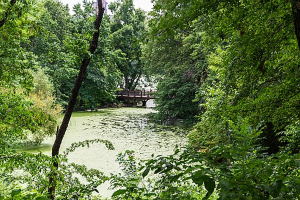 New York City is in a constant state of flux writes Open Culture, and there are dozens of local residents who remember what—and who—was displaced to pave the way for progress, including in the creation of Central Park itself!
New York City is in a constant state of flux writes Open Culture, and there are dozens of local residents who remember what—and who—was displaced to pave the way for progress, including in the creation of Central Park itself!
image: Dietmar Rabich / Wikimedia Commons / /
Plans for a peaceful green expanse to rival the great parks of Great Britain and Europe began taking shape in the 1850s, driven by well-to-do white merchants, bankers, and landowners looking for temporary escape from the urban pressures of densely populated Lower Manhattan.
It took 20,000 workers—none black, none female—over three years to realize architects Frederick Law Olmsted and Calvert Vaux‘s sweeping pastoral design.
A hundred and fifty years later, Central Park is still a vital part of daily life for visitors and residents alike.
But what of the vibrant neighborhood that was doomed by the park’s construction?
As historian Cynthia R. Copeland, co-director of the Seneca Village Project, points out above, several communities were given the heave ho in order to clear the way for the park’s creation.
The best established of these was Seneca Village, which ran from approximately 82nd to 89th Street, along what is known today as Central Park West. 260-some residents were evicted under eminent domain and their homes, churches, and school were razed.
This physical erasure quickly translated to mass public amnesia, abetted, no doubt, by the way Seneca Village was framed in the press, not as a community of predominantly African-American middle class and working class homeowners, but rather a squalid shantytown inhabited by squatters.
As Brent Staples recalls in a New York Times op-ed, in the summer of 1871, when park workers dislodged two coffins in the vicinity of the West 85th Street entrance, The New York Herald treated the discovery as a baffling mystery, despite the presence of an engraved plate on one of the coffins identifying its occupant, an Irish teenager, who’d been a parishioner of Seneca Village’s All Angels Episcopal Church.
According to historian Leslie Alexander’s African or American? Black Identity and Political Activism in New York City, 1784-1861, All Angels’ congregation was unique in that it was integrated, a reflection of Seneca Village’s population, 2/3 of whom were African American and 1/3 of European descent, mostly Irish and German.
Copeland and her colleagues kept Alexander’s work in mind when they began excavating Seneca Village in 2011, focusing on the households of two African-American residents, Nancy Moore and William G. Wilson, a father of eight who served as sexton at All Angels and lived in a three-story wood-frame house. The dig yielded 250 bags of material, including a piece of a bone-handled toothbrush, an iron tea kettle, and fragments of clay pipes and blue-and-white Chinese porcelain:
Archaeologists have begun to consider the lives of middle class African Americans, focusing on the ways their consumption of material culture expressed class and racial identities. Historian Leslie Alexander believes that Seneca Village not only provided a respite from discrimination in the city, but also embodied ideas about African pride and racial consciousness.
Owning a home in Seneca Village also bestowed voting rights on African American male heads of household.
Two years before it was torn down, the community was home to 20 percent of the city’s African American property owners and 15 percent of its African American voters.
Thanks to the efforts of historians like Copeland and Alexander, Seneca Village is once again on the public’s radar, though unlike Pigtown, a smaller, predominantly agricultural community toward the southern end of the park, the origins of its name remain mysterious.
Was the village named in tribute to the Seneca people of Western New York or might it, as Alexander suggests, have been a nod to the Roman philosopher, whose thoughts on individual liberty would have been taught as part of Seneca Village’s African Free Schools’ curriculum?
For now, there is little more than a sign to hip Park visitors to the existence of Seneca Village, but that should change in the near future, after the city erects a planned monument to abolitionists and former Seneca Village residents Albro and Mary Joseph Lyons and their daughter Maritcha.
Learn more about this bygone community in Copeland’s interview with the New York Preservation Archive Project the New York Historical Society’s Teacher’s Guide to Seneca Village.

